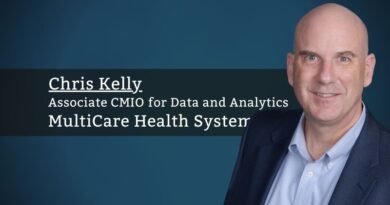Are We Ready for the 2019 version of the Tricorder?
By Priya Radhakrishnan, Faculty Physician, Medical Director, Chief Academic Officer, HonorHealth
When I was a kid, I was convinced that we would be beaming up as Scotty had shown us, instead of flying or driving. I was also certain that we would be using a Tricorder for diagnosis and treatment. For non-Star Trek Geeks, a tricorder was a multifunction hand-held device useful for data sensing, analysis, and recording, with many specialized abilities which made it an asset to crews aboard starships and space stations as well as on away missions. With the explosion of technology in health care, especially with wearables, we are so close to the tricorder becoming reality. Today, one can get in touch with one’s doctor by clicking a button on a phone; apps and platforms regularly augment and facilitate health care decisions. Diagnosing heart rhythm abnormalities like atrial fibrillation or sleep apnea using wearable or managing diabetes using patient-generated data does not even raise an eyebrow.
During this last decade, the near-universal adoption of electronic health records (EHRs) provides us a unique opportunity to study diseases and develop new epidemiological models of disease control and prevention. Wearable technology and artificial intelligence: the new frontiers have the promise of combining data collected within EHRs and patient-generated data especially patient-reported outcome measures (PROMs) and truly impacting the practice of medicine.
As we enter 2019, access to smart technology continues to increase. An estimated 90% of American adults have access to a cell phone or have a family member or friend who has one. 64% of American adults have a smartphone. One in six (15%) consumers in the United States currently uses wearable technology, including smartwatches or fitness bands. With the smartphone revolution, an increasingly powerful new set of tools are being available to patients and physicians: phone attachments that can diagnose an ear infection or track heart rhythms, promote weight loss, predict falls and improve quality of life and safety amongst patients with movement disorders via sensors in their clothing, to apps that can monitor and possibly treat mental health. These tools have the ability to reduce our use of doctors, cut costs, speed up the pace of diagnosis and give more power to patients. Imagine if we could eliminate the need for patients to sleep in a lab overnight to diagnose and treat sleep apnea, or were able to titrate insulin doses for all our patients using smart devices.
The challenge facing physicians, medical educators, patients, developers, and system leaders is how to convert thousands, even millions of data points of information into knowledge.
I regularly invite my patients, in my practice, to use wearables and apps to monitor their diseases and symptoms, with the caveat that they are not validated and current evidence requires me to verify findings by applying the standard tests. Over the years, I have seen a significant activation of my patients and the ability for shared decision making and improved compliance. The proliferation of smart devices brings the opportunity to revolutionize and augment the practice of medicine.
The success and proliferation of the wearable market and the adoption is however, significantly hampered by the payment structure of the healthcare industry. Currently, most wearables are still in ‘test or pilot’ stages and are currently directly marketed to patients as wellness products. Some barriers in adoption include a lack of studies on validity and reliability compared to standard tests. The good news is that many companies are testing these products and FDA approvals for wearables continues to increase.
There is a paucity of information and a clear pathway for the dissemination of information to physicians regarding the efficacy of the technology. There is a significant need for education of physicians and other clinicians about innovative technologies and the impact on diagnosis and treatment. Traditional venues and modalities of learning used by physicians: continuing education events, journal articles and journal clubs and conferences have a remarkable paucity of information that is readily available for physicians. I have yet to see a standard “Updates in Technology” section as a standing agenda item on a medical conference agenda.
Another barrier towards ready adoption of technology is general fatigue and apathy felt by the clinicians towards new technology. EHRs have contributed significantly to the burnout epidemic within healthcare. The lack of usability of the EHRs and data platforms, need for multiple sign-ons and inability of patient portals to be truly useful prevents the conversion of data from these diverse sources into actionable information or knowledge. As a result, there is a trend amongst developers of bypassing front line physicians and clinicians with the hope of luring systems or insurers into adopting this technology. The problem with this approach is that the front line clinicians are still needed to act on these data sets, given the current health care delivery system. Our current system does not reimburse clinicians for time spent on innovation and the use on non-patient facing encounters. Medicare has provided a glimmer of hope with some of the new payment codes for chronic care management announced in 2018.
The challenge facing physicians, medical educators, patients, developers, and system leaders is how to convert thousands, even millions of data points of information into knowledge. The health care technology revolution especially with wearable technology, coupled with the use of artificial intelligence and machine learning, is here and has great promise, but currently is in its nascency. In order for this technology to live up to its promise, there has to be a significant redesign of our health care system to value innovation and the cognitive effort needed to transform health care.
Innovation and learning labs and genius bars in clinics and hospitals are sprouting all across the country to help act as catalysts to expedite the speed of change. The tricorder (or alternatives) will be ubiquitous soon!



